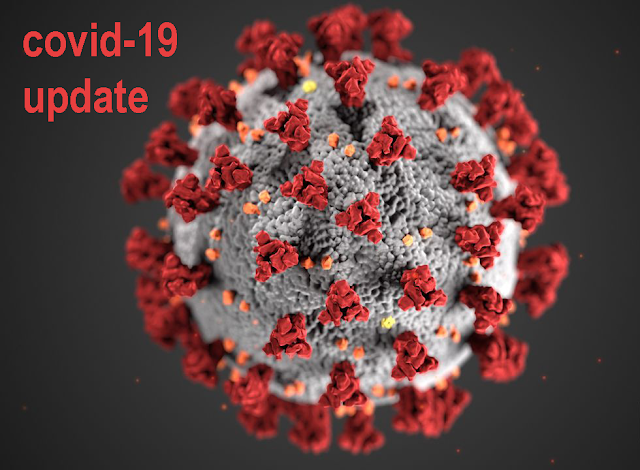Most Ky. pandemic metrics down; CDC urges pregnant women to get vaccinated; 1 in 3 with Covid-19 report long-lasting effects

By Melissa Patrick
Kentucky Health News
Most measures of the pandemic in Kentucky dropped again Friday, but the numbers remain high overall and the newly reported deaths included two people who were only 36 years old.
The main measure, the seven-day average of daily new cases of the coronavirus, did not drop. The state reported 4,118 new cases Friday, bringing the average to 3,076, an increase of 25 from Thursday’s average.
However, Kentucky’s seven-day infection rate dropped to eighth among the states and territories, reports The New York Times. The state reported an infection rate of 61.48 daily cases per 100,000 residents. Counties with rates more than double that rate were Owsley, 139.1; Whitley, 136.3; Harlan, 134.6; and McCreary, 134.3.
Still, hospitals remain under stress. All but one of the state’s 10 hospital regions were using more than 88% of their intensive-care beds as Friday began.
The state reported 34 more Covid-19 deaths, bringing the toll to 8,804, 1¼% of the national total, which just passed 700,000. Gov. Andy Beshear said in a Facebook post that Friday’s deaths included two 36-year-old Kentuckians. In the last seven days, the state has reported an average of 44.6 deaths per day.
“Please, help encourage others to roll up their sleeve and mask up indoors to protect the lives or our people,” Beshear said.
Vaccinations: In the last seven days, the state has averaged 12,795 vaccinations per day, a 7% increase over the previous seven days. Its full vaccination rate of 52.3% is 25th among the states; 2.7 million Kentuckians have received at least one dose of a vaccine, which amounts to 60% of the state’s total population, 71% of the eligible population (12 and older) and 73% of those 18 and older.
On Thursday, the Centers for Disease Control and Prevention issued an “urgent health advisory” to urge pregnant women to get vaccinated.
As of Wednesday, Sept. 27, the U.S. had more than 125,000 confirmed cases of Covid-19 in pregnant women, 22,000 of whom were hospitalized; 161 died, the advisory said. Twenty-two of those deaths occurred in August.
Compared with non-pregnant people with Covid-19 symptoms, cases in symptomatic, pregnant women have double the risk of going to intensive care and a 70% increased risk of death. Those with Covid-19 are also at increased risk of adverse pregnancy outcomes, including pre-term birth and stillbirth, and a baby’s admission to intensive care.
Treatment: A new treatment for Covid-19 is on the way. Merck‘s antiviral drug Molnupiravir, developed in partnership with Ridgeback Biotherapeutics, has been shown to reduce the risk of hospitalization or death by about 50% in a clinical trial, according to a news release. The company says it will seek emergency use authorization as soon as possible. It would be the first oral antiviral for Covid-19.
The federal government signed a deal with Merck in June to buy 1.7 million courses of Molnupiravir for $1.2 billion if it’s authorized by the Food and Drug Administration, reports Becker’s Hospital Review. FDA approval could take less than two months.
Long covid: A study of 273,618 electronic health records of patients diagnosed with Covid-19, published in the journal PLOS Medicine, found that “over one in three patients had one or more features of long Covid recorded between three and six months after a diagnosis of Covid-19.”
The Washington Post reports that the most common lingering symptoms were anxiety and depression, trouble breathing, abdominal issues, fatigue and pain. National Geographic reports that the disease can affect not only taste and smell, but also sight, hearing and touch.
Prevention strategies: A CDC study of nine overnight camps that implemented multiple prevention strategies to protect campers from Covid-19, including high vaccination rates, pre-arrival screening tests, frequent testing at camp, and masking, physical distancing and hand hygiene, were successful in averting Covid-19 outbreaks.
Among 7,173 campers and staff in the months of June and August, only nine Covid-19 cases were confirmed and no secondary infections were detected.
“Implementation of high vaccination coverage coupled with multiple prevention strategies is critical to averting Covid-19 outbreaks in congregate settings, including overnight camps. These findings highlight important guiding principles for school and youth-based Covid-19 prevention protocols,” says the report.